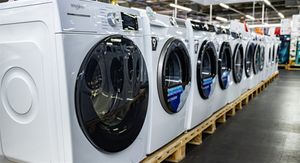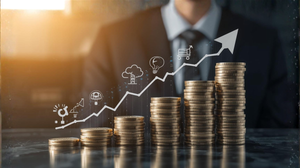
Silver, often overshadowed by its glittering counterpart gold, has dramatically seized the spotlight in 2025, embarking on an explosive year-to-date rally that has seen its price surge by an astounding 43%. This remarkable ascent has not only captivated the financial markets but also ignited fervent discussions among analysts and investors alike: is the white metal poised to breach the psychological $50 per ounce barrier by early 2026, marking an unprecedented era for the precious and industrial commodity? The current trajectory suggests a powerful confluence of factors is driving silver's resurgence, hinting at a prolonged bullish phase.
The current financial landscape is witnessing silver trade at levels not seen in over a decade, crossing the $40 per ounce threshold in late August and maintaining its robust momentum into mid-September 2025, where it hovers around $41-$42. This significant price appreciation is more than just a fleeting moment; it reflects deep-seated shifts in global economics, industrial demand, and investor sentiment. As the world grapples with persistent inflation, geopolitical uncertainties, and an accelerating green energy transition, silver's dual identity as a safe-haven asset and a critical industrial metal is proving to be its most potent strength.
What Sparked the Silver Surge and Why It Matters
The dramatic rise in silver prices throughout 2025 is not a singular event but rather the culmination of several powerful, intertwined trends. The year began with a steady upward climb, but momentum truly accelerated in the late summer, pushing the metal past key resistance levels and into uncharted territory for many contemporary investors. By early September, silver had decisively broken above $40 per ounce, a benchmark last achieved in 2011, solidifying its position as one of the best-performing assets of the year.
The primary drivers behind this explosive growth are multifaceted. Firstly, record-high industrial demand is playing a pivotal role. Silver is an indispensable component in the burgeoning green energy sector, particularly in solar panels and electric vehicles (EVs). Global efforts to combat climate change have spurred unprecedented investments in renewable energy infrastructure, with solar panel installations soaring. Similarly, the electrification of the automotive industry means a significant increase in silver usage per vehicle. Industrial applications now account for an estimated 59% to 64% of global silver demand, a proportion that continues to grow.
Secondly, a persistent structural supply deficit has plagued the silver market for several consecutive years. Mine supply has consistently failed to keep pace with escalating demand. A significant challenge is that silver is often mined as a byproduct of other metals like copper, lead, and zinc, meaning dedicated silver exploration and development projects are fewer. This inherent supply constraint, combined with strong demand, has led to a noticeable decline in above-ground physical inventories, further tightening the market.
Thirdly, geopolitical tensions and broader macroeconomic factors are fueling silver's appeal as a safe-haven asset. Ongoing global uncertainties, including regional conflicts and concerns about economic stability, have driven investors towards traditional stores of value. Coupled with this, expectations of monetary easing by central banks, particularly the US Federal Reserve, are making non-yielding assets like silver more attractive. A weaker US dollar, often a consequence of interest rate cuts, also typically provides a tailwind for commodity prices. Furthermore, Washington's designation of silver as a "critical metal" for national security has added another layer of market interest, raising discussions around potential tariffs or strategic reserves that could impact supply dynamics. The overall market sentiment is overwhelmingly bullish, with investors viewing silver as an undervalued opportunity, especially when considering the historically high gold-silver ratio, which suggests silver has significant catching-up to do relative to gold.
Companies Riding the Wave: Winners and Potential Losers in the Silver Boom
The surging price of silver in 2025 is creating a clear delineation between winners and potential losers across the financial markets. For companies primarily involved in silver mining and exploration, the rising price directly translates into higher revenues and potentially significantly improved profit margins. Conversely, industries heavily reliant on silver as a raw material might face increased production costs, though many are likely to pass these costs onto consumers or innovate to reduce silver content.
The Winners: Silver Miners Strike Gold (or Silver)
The most immediate beneficiaries of silver's explosive growth are the public companies engaged in its extraction. With relatively fixed operational costs, a 43% increase in the price of silver flows disproportionately to their bottom lines, boosting profitability and cash flow. Major players like Pan American Silver (NYSE: PAAS), one of the world's largest primary silver producers, and First Majestic Silver (NYSE: AG), known for its pure-play silver focus, are seeing substantial improvements in their financial outlooks. Their stock prices often exhibit amplified gains during silver bull markets, reflecting operational leverage. Hecla Mining Company (NYSE: HL), the largest silver producer in the United States, also stands to benefit significantly, alongside development-stage companies like MAG Silver (NYSEAMERICAN: MAG) and Vizsla Silver (NYSEAMERICAN: VZLA), whose projects become exponentially more valuable at higher silver prices.
Streaming companies, such as Wheaton Precious Metals Corp. (NYSE: WPM), also emerge as significant winners. These companies provide upfront financing to miners in exchange for the right to purchase silver (and other precious metals) at fixed, often very low, costs. As the market price of silver climbs, their profit margins expand dramatically without incurring direct mining operational expenses or risks. The improved cash flow for miners, buoyed by the price surge, enables them to reduce debt, potentially increase shareholder returns through dividends or buybacks, and crucially, invest more in exploration and development. Higher prices incentivize new project investment, though the long lead times for mine development mean these benefits are often realized over several years.
The Challengers: Industrial Users Face Rising Costs
While the surge is a boon for producers, it presents challenges for industries that rely heavily on silver as a critical raw material. Industrial applications now constitute over 60% of global silver demand, with solar power, electric vehicles (EVs), and general electronics being the primary consumers. Companies in these sectors, while experiencing robust demand for their end products, must contend with significantly higher input costs.
Solar panel manufacturers, including giants like JinkoSolar Holding Co. (NYSE: JKS) and Canadian Solar Inc. (NASDAQ: CSIQ), use silver paste as a crucial conductive component in solar cells. A 43% increase in silver prices directly impacts their production costs, potentially squeezing margins. These companies are actively investing in research and development to reduce silver content (known as "thrifting") or explore alternative cell architectures that require less silver, but these efforts take time. Similarly, EV manufacturers such as Tesla Inc. (NASDAQ: TSLA), NIO Inc. (NYSE: NIO), and legacy automakers like Ford Motor Co. (NYSE: F), use silver in numerous electrical contacts, battery management systems, and other components. While silver might be a smaller percentage of their overall bill of materials compared to lithium or nickel, the escalating cost adds to the broader inflationary pressures on vehicle production. For consumer electronics companies like Apple Inc. (NASDAQ: AAPL) and Sony Group Corporation (NYSE: SONY), silver is essential for high-performance components, and while they are large and diversified enough to absorb some increases, prolonged elevated prices could still affect their supply chains and pricing strategies. Industrial users will likely respond by intensifying R&D into material substitution, strengthening supply chain resilience, exploring recycling initiatives, and potentially passing on some increased costs to consumers.
Industry Impact and Broader Implications: A Green Shift and Historical Echoes
Silver's dramatic ascent in 2025 is not an isolated market phenomenon but a profound indicator of several broader industry trends and significant macroeconomic shifts. Its trajectory is deeply interwoven with the global push towards sustainable energy, the dynamics of precious metals markets, and evolving geopolitical considerations.
The most significant broader implication stems from the green energy transition. Silver is not merely a precious metal; it is a critical industrial commodity essential for the future of clean energy. Its unparalleled electrical and thermal conductivity make it irreplaceable in photovoltaic (PV) cells for solar panels, where it's the second most costly material after silicon. The surge in silver prices underscores the immense and growing demand from a rapidly expanding solar industry, projected to continue its exponential growth worldwide. Similarly, the electrification of transportation, driven by companies like Tesla (NASDAQ: TSLA) and a host of other EV manufacturers, significantly increases silver usage per vehicle compared to internal combustion engines. This foundational demand from a booming sector suggests that silver's price strength is not ephemeral but rooted in a fundamental industrial requirement. The tight supply-demand balance in this context implies that any slowdown in silver output or continued acceleration in green tech adoption will sustain upward price pressure.
From a regulatory and policy perspective, the designation of silver as a "critical metal" for national security by Washington is a crucial development. This classification highlights its strategic importance and could lead to policies aimed at securing domestic supply, potentially through tariffs on imported silver or incentives for domestic mining. Such measures could further exacerbate supply constraints in the global market and create price dislocations, impacting international trade flows and manufacturing decisions. The geopolitical landscape, with ongoing trade tensions and supply chain vulnerabilities exposed during recent global events, only amplifies the focus on securing critical raw materials like silver.
Historically, silver markets have experienced periods of explosive growth, often driven by a combination of industrial demand, monetary policy, and speculative interest. Comparing the current surge to past silver booms, such as the late 1970s or the early 2010s, reveals common underlying themes: inflationary pressures, investor flight to tangible assets, and supply concerns. However, the unique aspect of the current rally is the unprecedented scale of demand from the green energy sector, which was not a dominant factor in previous cycles. This robust, fundamental industrial demand provides a stronger underpinning for sustained price levels compared to rallies driven primarily by speculative fervor. The persistently high gold-silver ratio, which currently sits around 86:1, also suggests that silver remains historically undervalued relative to gold, implying significant room for ratio compression and further price appreciation for silver if it moves towards its long-term average ratio.
What Comes Next: Navigating the Silver Frontier
As silver entrenches itself above the $40 per ounce mark, the critical question for investors, miners, and industrial users alike is what the future holds. The consensus among many analysts points to continued bullish sentiment, with a strong likelihood of testing and potentially breaching the $50 per ounce barrier by early 2026. This trajectory is supported by a mix of fundamental drivers and technical indicators.
In the short-term, silver prices are expected to remain volatile but with a strong upward bias. The immediate future will likely see further institutional investment flows into precious metals as global economic uncertainties persist and central banks signal potential interest rate cuts. Technical analysis indicates strong support levels, suggesting that any pullbacks might be limited and short-lived. The ongoing supply deficits and robust industrial demand, particularly from the solar and EV sectors, will continue to provide a floor for prices. Investors should watch for any new developments in global monetary policy, particularly from the Federal Reserve, as rate decisions have a significant influence on commodity markets. Geopolitical events also remain a key variable, as increased tensions typically boost safe-haven demand for silver.
For the long-term, the outlook for silver appears even more compelling. Forecasts from various institutions and experts suggest that prices could not only sustain above $50 but potentially climb much higher over the next decade. The relentless growth in demand from the green energy sector—solar, EVs, and supporting infrastructure—is a foundational trend that will not abate anytime soon. This structural demand, coupled with inherent limitations in mine supply and declining above-ground inventories, paints a picture of a market facing persistent tightness. Strategic pivots for mining companies might include increased investment in exploration and expanding existing operations, though the time lag for bringing new production online means supply responses will be slow. Industrial users will continue to prioritize R&D into silver-thrifting technologies and securing stable supply chains to mitigate cost impacts.
Potential scenarios and outcomes for silver include a continued steady climb, potentially reaching $60 per ounce by mid-2026 as predicted by some analysts, or a more volatile but ultimately upward trajectory, punctuated by short-term corrections. A significant breakout above $50 per ounce could trigger a fresh wave of speculative interest, further accelerating the rally. However, potential challenges include a sudden and unexpected shift in global economic sentiment towards stronger growth and higher interest rates, which could dampen safe-haven demand, or a technological breakthrough that dramatically reduces silver requirements in key industrial applications. Nonetheless, given the current fundamental drivers, the probability of silver maintaining its upward momentum appears high.
Conclusion: Silver's Enduring Shine in a Changing World
Silver's explosive 43% year-to-date surge in 2025 marks a pivotal moment for the often-overlooked precious and industrial metal. Its journey past the $40 per ounce mark and the strong analyst consensus pointing towards a $50 target by early 2026 underscore its evolving and critical role in the global economy. This rally is not merely a speculative bubble; it is deeply rooted in robust industrial demand from the accelerating green energy transition, persistent structural supply deficits, and its enduring appeal as a hedge against inflation and geopolitical uncertainty.
The key takeaways from this event are clear: silver is no longer just a secondary precious metal. Its indispensability in solar panels, electric vehicles, and advanced electronics positions it at the forefront of the technological revolution. This fundamental demand, combined with an inelastic supply, creates a compelling environment for sustained price appreciation. Mining companies are experiencing a significant boon, bolstering their financial health and encouraging future investment, while industrial users are challenged to innovate and secure their supply chains amidst rising costs.
Moving forward, the silver market is poised to remain dynamic and highly scrutinized. Investors should continue to monitor global macroeconomic indicators, particularly inflation rates and central bank policies, as well as geopolitical developments. The pace of the green energy transition and advancements in silver-thrifting technologies within industrial applications will also be crucial factors influencing future prices. As the world navigates a complex economic and environmental landscape, silver's dual utility as both a strategic industrial metal and a store of value ensures its lasting significance and continued role as a powerful market mover. The question is no longer if silver will shine, but how brightly it will burn in the years to come.


















